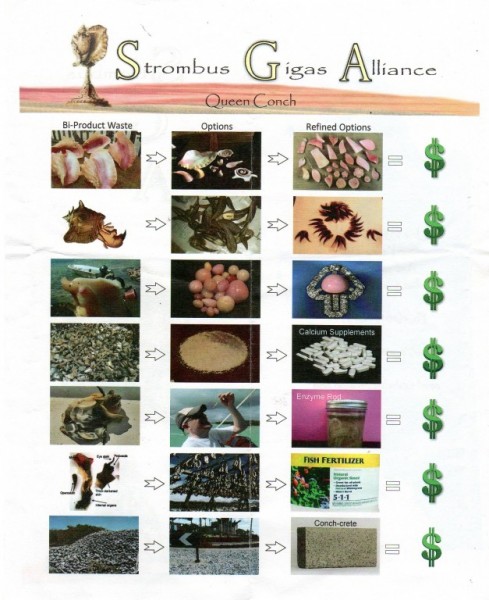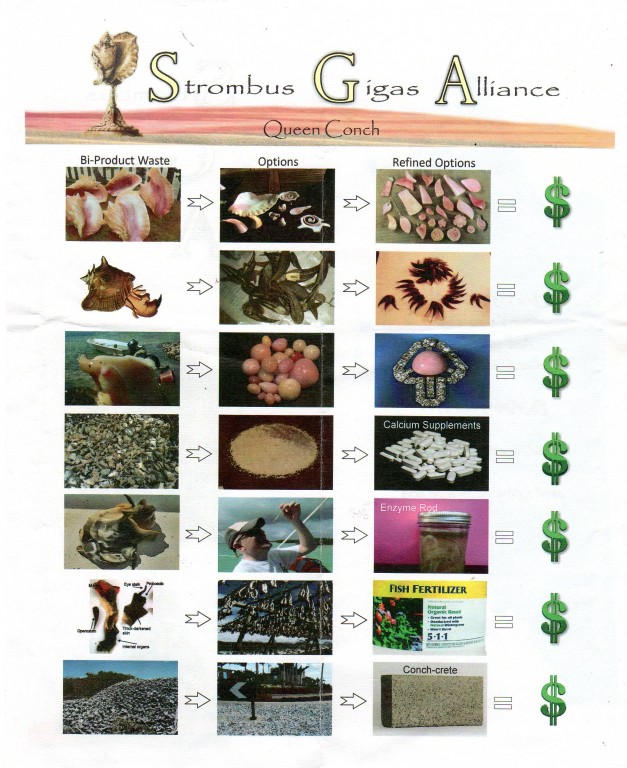The 69th Golf and Caribbean Fisheries Institute (GCFI) conference took place in Grand Cayman Islands from the 6th to the 11th of November. Representing Belize at this annual conference was Strombus Gigas Alliance (SGA) a non-governmental organization from Ambergris Caye. Top world marine-life stakeholders were in attendance, and they had the opportunity to learn of the progress SGA is making with their awareness campaign. Specifically, the full economic value of the entire conch as opposed to the small amount of flesh presently consumed.
Conch is a Belizean delicacy and according to SGA’s Glenn Schwendinger and Dr. Dianne Lawrence, it is not completely utilized. During their presentation they updated the Caribbean and global fishing community on their five-year progress. They proposed a compensation initiative for fishers by using the by-products of the conch. Schwendinger says that all parts of the conch can be used, but fisher folk dump the remaining parts of the conch, not realizing that it could otherwise earn extra income.
According to Schwendinger, the presentation was successful and well-received. They had the opportunity to introduce the use of a special curl tool to extract the conch without having to break or damage the shell. “Everyone was very supportive of the idea of our plans and what we have done so far,” he said. “We met a lot of people who became very interested in this tool and at the moment we are discussing how to market it.” Schwendinger stated that manufacturing of the tool will start at the end of February 2017, and will be available for about $40. “Once this project begins and we have the tools available, we will host training sessions for different fishing associations,” said Schwendinger.
Dr. Lawrence indicated that the whole idea is to help the fishing community and the industry in general. According to her, with the conch quota being lower every year, fishers are losing. But if they can learn to use all the parts of the animal, it will be extremely beneficial for the fishermen of Ambergris and Belize. “We at SGA are here to help the fishing community, especially when they fall short of the catch limits. After they know how to make use of the other parts of the conch, then they can make up for any shortages they may experience due to the changes in the conch season every year,” said Lawrence.
Despite this being a great idea, currently a special permit is needed in order to work with the species of the Queen Conch. Once properly permitted, the Convention on International Trade in Endangered Species of Wild Fauna (CITES), does allow for the trade of not just the flesh of the Queen Conch but also its parts. However, it is a bit more challenging for the remaining of the parts of the conch. Another obstacle for the project to fully be implemented regionally is the fact the U.S-based Non-Governmental Organization Wild Earth Guardians petitioned the U.S Government to list the Queen Conch as an endangered species.
Due to this fact, the progress of SGA has been a bit challenging. According to Schwendinger, CITES is not against the use of the by-products. “One just has to do the paperwork to anecdote the by-products of the animal,” he said. But the other hurdle is that the process for that particular paper work (other parts of the conch) can take up to four years to be approved. Schwendinger stated that for the meantime, the project involving the by- products of the conch can be executed in Belize only.
Annually, Belize’s conch harvest yields approximately $11 million in revenue. SGA believes that figure could be higher with the additional income from the conch’s by-products. Some of the side products include conch shell jewellery, which can range from necklaces to beautiful pearl ornaments. The shell can be ground and converted into calcium supplements. They can even be used or as land fill and a solid block known as ‘conch-crete.’ Furthermore, parts of the animal’s internal organs can be consumed for the production of enzymes, and certain parts of its gut can be dried and turned in to fish fertilizer.
For more information on the SGA and their projects visit their site at www.sgainternational.org or via email at [email protected].
Strombus Gigas Alliance represents Belize at 69th GCFI Conference in Grand Cayman

Share
Read more

